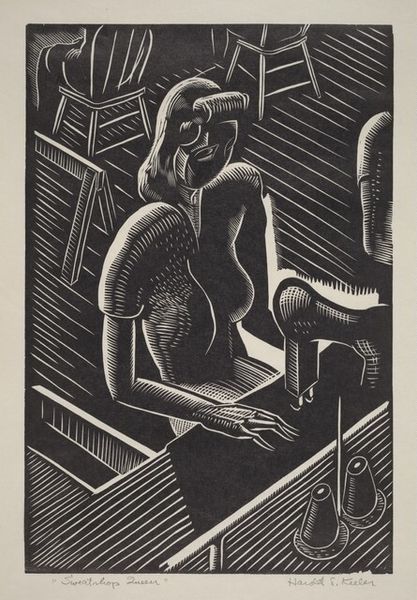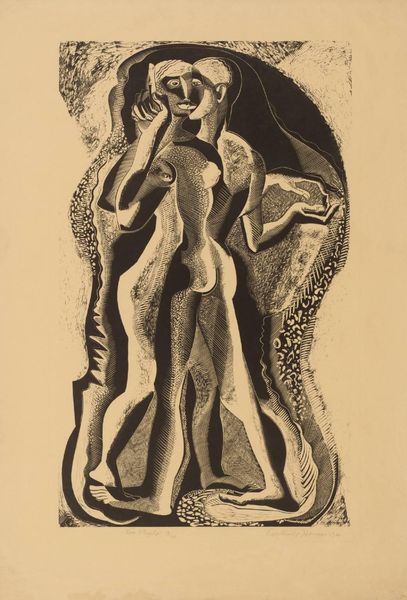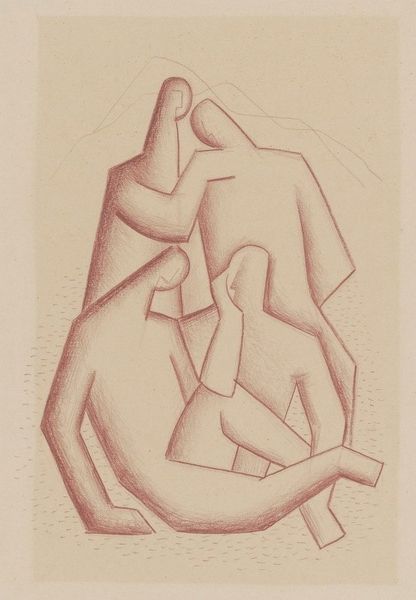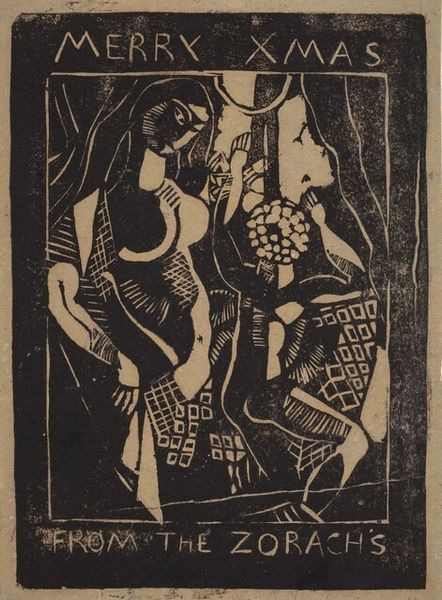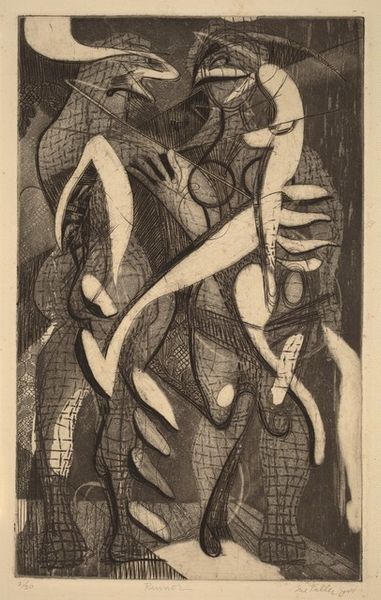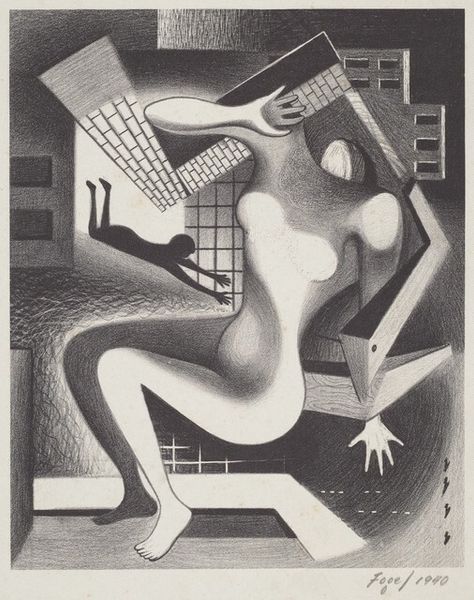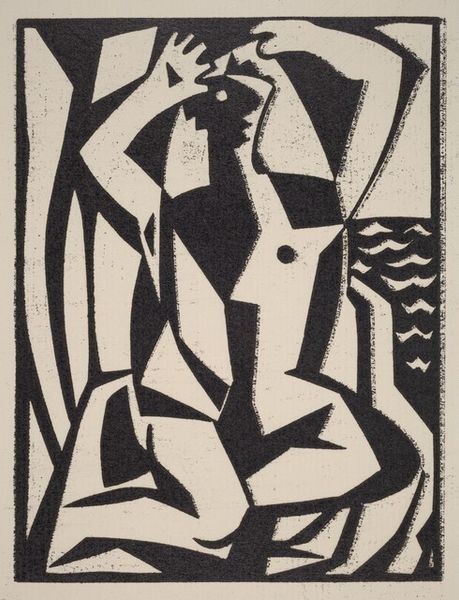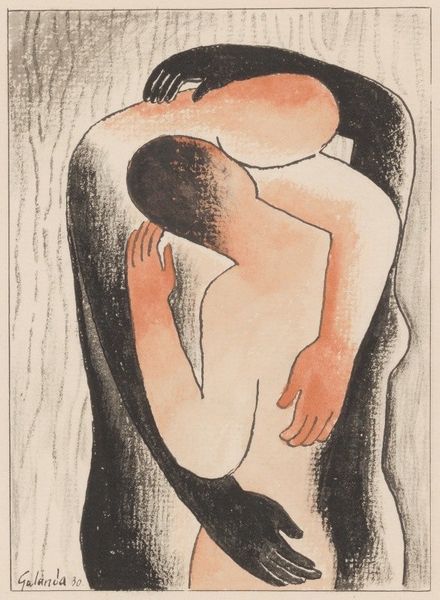
print, engraving
#
art-deco
# print
#
figuration
#
form
#
geometric
#
line
#
engraving
Dimensions: block: 260 x 174 mm sheet: 312 x 214 mm
Copyright: National Gallery of Art: CC0 1.0
Curator: Charles Turzak's print, "Dancers," created in 1939, immediately strikes me. There's a palpable tension, isn’t there? All hard lines and striking contrasts, giving it this sort of stylized, almost unsettling energy. Editor: Unsettling, yes, but perhaps deliberately so. The art deco style here, and Turzak's radical use of geometric shapes to abstract the human form—I see not tension, but a reflection of a rapidly industrializing world. There's something about the black and white engraving that evokes that period's social anxieties, the changing roles, perhaps even the underlying class struggles represented through abstracted bodies. Curator: I see your point, certainly. The forms, though abstracted, retain this recognizable quality, these familiar gestures that invite a reading of the body. Note the almost tubular arms, the striated skirt of the dancer, her cascading hair juxtaposed with the sharp, severe lines defining the male figure. Turzak masterfully orchestrates a contrast between soft organic shapes and hard geometric forms. Editor: Absolutely, and the setting reinforces the dynamic, almost a claustrophobic performance space bordered by stylized flora, rendered almost like a cage or constructed frame. It’s reminiscent of both the constraints and superficial freedoms that defined female roles in that era. Look at how her patterned skirt emphasizes stylized movements. The composition evokes anxieties around performativity within rigid social spaces. Curator: An insightful reading. And yet, for me, it all circles back to the interplay of form and space, that pure formalism creating an aesthetic experience apart from contextual realities. Consider the engraving itself: the negative space becomes as vital as the delineated forms. There's a self-referential quality in this, foregrounding the constructedness of the image itself. Editor: True, but let's not disassociate form from its socio-historical grounding entirely. An understanding of these tensions elevates appreciation beyond pure aesthetics, grounding in an interpretation enriched through its complex layers of meaning. This pairing transcends the mere visual, pushing us toward engagement with broader social issues of the 1930s. Curator: I will concede, this conversation illuminated new levels of seeing for me. Editor: Indeed, these multiple readings make experiencing artwork continuously transformative and profoundly vital.
Comments
No comments
Be the first to comment and join the conversation on the ultimate creative platform.
